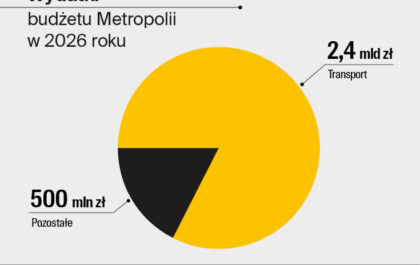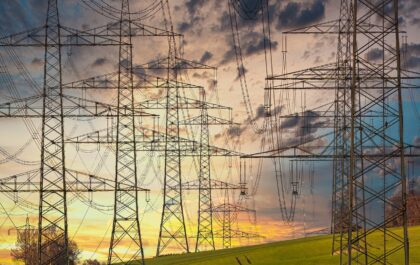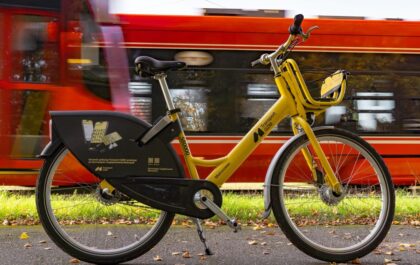
As many other places in Poland, cities and municipalities of our Metropolis must face the challenges of adapting to the changing climate. One of the key challenges is the rainwater management. When there is too much rainwater – there is flooding, when there is too little – lawns get dry, tree leaves become yellow and we walk through dusty and heated streets. The most effective action is managing rainwater in the place where it falls on the ground. The safest and cheapest is to think smart about our surroundings and not about expensive infrastructure. On this website we would like to encourage you to join us in caring about the safety and comfort of life in our city, in thinking about the rainwater.
We suggest you a few solutions which you may apply at your own house or in its surroundings in order to improve the state of the environment in your close vicinity. The small initiatives such as rain gardens, small ponds, water barrel under gutter, or removing excessively, and often unnecessarily, sealed off surfaces and their replacement with those water permeable ones – if there are hundreds or thousands of them, then together they will bring the expected effect.
Find more information in brochures
Najważniejsze dla nas w gospodarowaniu wodą deszczową w miastach i przystosowaniu ich na zmiany klimatyczne i anomalia pogodowe jest zagospodarowanie deszczu w miejscu gdzie on spada na ziemię. Istotne jest, by działania były podejmowane na każdym poziomie: od pojedynczych nieruchomości – przez mieszkańców, po tereny miejskie – poprzez samorządy. Gdy zadbamy o tereny miast i nie będziemy ich nadmiernie „uszczelniać” tworząc efekt tzw. „betonozy”, gdy spowodujemy, że deszcz zamiast błyskawicznie odpływać po betonowych powierzchniach, będzie miał szansę powoli wsiąkać, ograniczymy powodzie, zasilimy wody gruntowe przeciwdziałając usychaniu drzew i trawników, ograniczymy potrzebę ingerowania w naturalne rzeki, a może nawet przywrócimy – jak to dzieje się w wielu miastach na świecie – nasze miejskie cieki mieszkańcom, jako tereny rekreacyjne i spacerowe. Zawróćmy nasze miasta z powrotem frontem ku wodzie!
What does that mean in practice? It means to have as little paving stones around houses as possible, it means departure from concreting market squares in cities and towns, using rainwater around houses to water the gardens, rinsing pavements and alleys with rainwater, and even using it to do laundry or flush toilets. We encourage you to treat water as it results from the Water Law – as a valuable resource we need to take care of, and not a threat we should get rid of.
An interesting experience is to compare the amount of water generated in the water companies in cities with the amount of rainwater that falls on average within the area of a given city. As experts from RetencjaPL indicate, for the majority of cities, there is 3 to 4 times more rainwater falling compared to the amount of water supplied by water companies. What do we do with this precious resource? Do we harvest rainwater in order to use it or, unfortunately, we try to drain it as fast a possible from a given area treating it as a threat?
What can we do as citizens? Water collected in domestic tanks can be used both outside and inside the building. The easiest way to use rainwater is to water the garden during dry seasons.
But before we start using rainwater, let’s start with the simplest and most effective activities. Follow the basic hierarchy of actions: 1. Do not seal off! 2. Drain slowly! 3. Collect and use!
Do not seal off!
Sealing surfaces in cities causes increase in and acceleration of rainwater drainage. Sewage system does not have sufficient capacity for such large amounts of water during downpours. On the other hand, during droughts, yellowing lawns, drying trees and a low water level in wells indicate that there is not enough water in the ground – it is gone. What's the solution? Let us avoid paving, asphalting or concerting the ground in our neighbourhoods and yards. Let's try and keep the water where it falls to the ground, allowing it to soak in. It’s the cheapest and best solution.
Drain slowly!
When rainwater rapidly runs down the sealed surface of roofs, squares and streets, and into pipes, the risk of flooding increases dramatically. At the same time, the water is irreversibly lost: it does not soak into the ground, it does not supply lawns, gardens and trees in our cities. Slow drainage, with detaining the water in ponds, house gardens, ditches and recesses is the best way to prevent floods and droughts. Let us return natural circulation of water to urban ecosystems as well.
Collect and use!
In recent years, the cities have faced a risk of flooding, but at the same time longer periods without rainfall. It is a good practice to allow water to soak in, and collect the surplus from roofs, squares and pavements in tanks, to be used for watering plants, washing streets or flushing toilets. Using rainwater brings significant savings. With aggregated effects of many smaller tanks, the spread retention will translate into calculable benefits for everyone. Re-using water will contribute to mitigating the effects of drought and improve microclimate.
What else can we do? Here are some inspirations for the cities and municipalities:
- Sealing off an area for any investment should be accompanied by detention (delaying) or retention (collecting) rainwater so that the drainage from the wide range of rain (rain scenarios) of different likelihood and duration was the same as before the investment and would not increase the risk of flooding. Then we talk about the so-called hydrological neutrality of new investments. It is worth considering including it as the basic planning requirement.
- The extension of hard infrastructure should be related to the support system of micro-retention development and stimulating water infiltration into the soil. Construction of underground tanks and pipe retention cannot be the only form of dealing with the threats being the result of the advancement of urbanisation and climate change.
- In the areas of high level of sealing and planned to be densely developed or designated for industrial development, one must ensure the maximum possible share of a biologically active surface as enclosed within one envelope (that is, not divided into pieces) of coherent areas designated as greenery with a retention function (water retention).
- It would be beneficial to take into account combining rainwater with the need to water the greenery and keeping the city clean.
Useful links:
Polski Atlas Natężeń Deszczów PANDa
And here are some examples of cities outside Metropolis GZM - cities in Poland which have already undertaken actions promoting the blue-green infrastructure, similarly to us.
Przykłady działań promujących zielno-niebieską infrastrukturę podjętych przez polskie miasta spoza obszaru Metropolii:
Bydgoszcz:
Sopot:
Jak rozsądnie gospodarować wodami opadowymi?
Wrocław:
Kraków:








